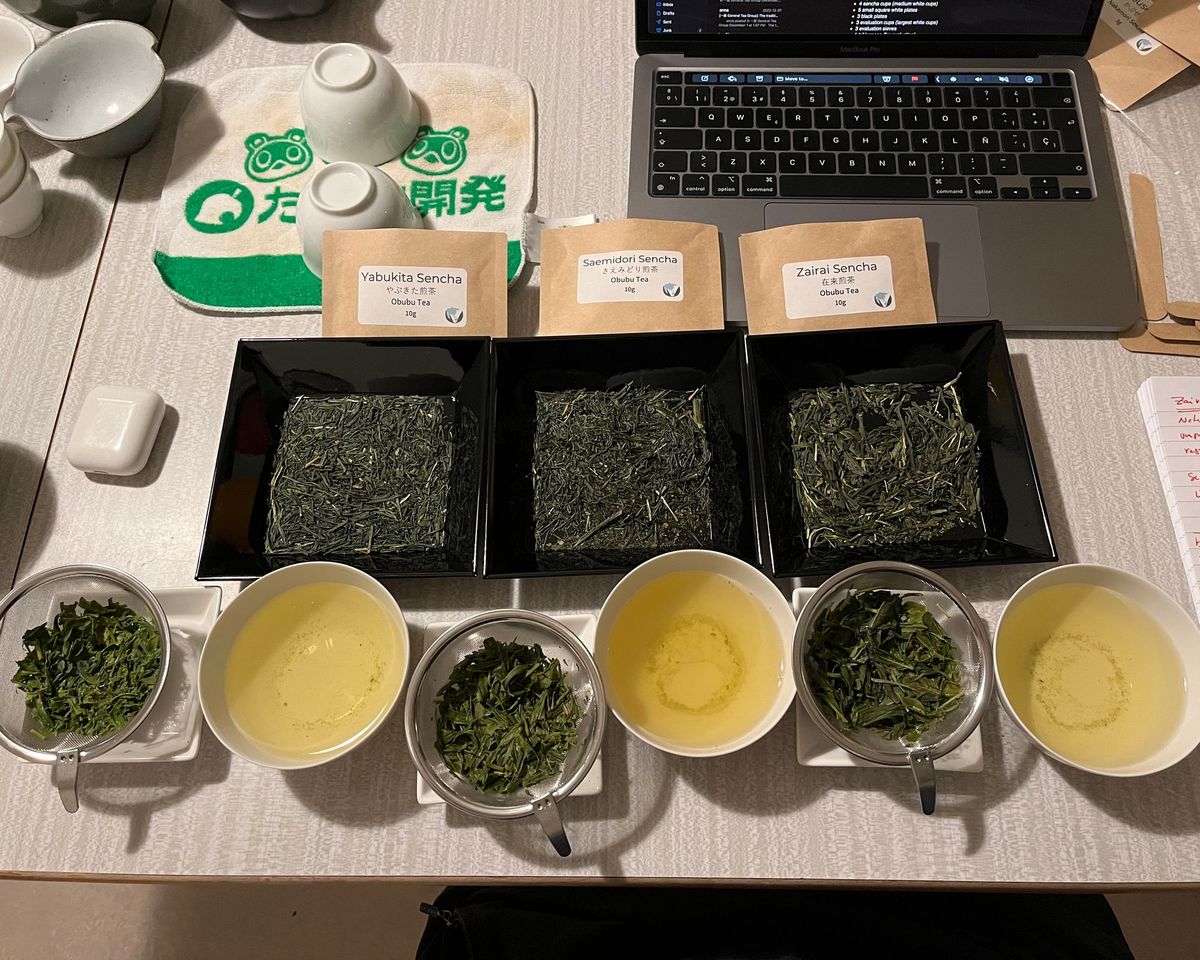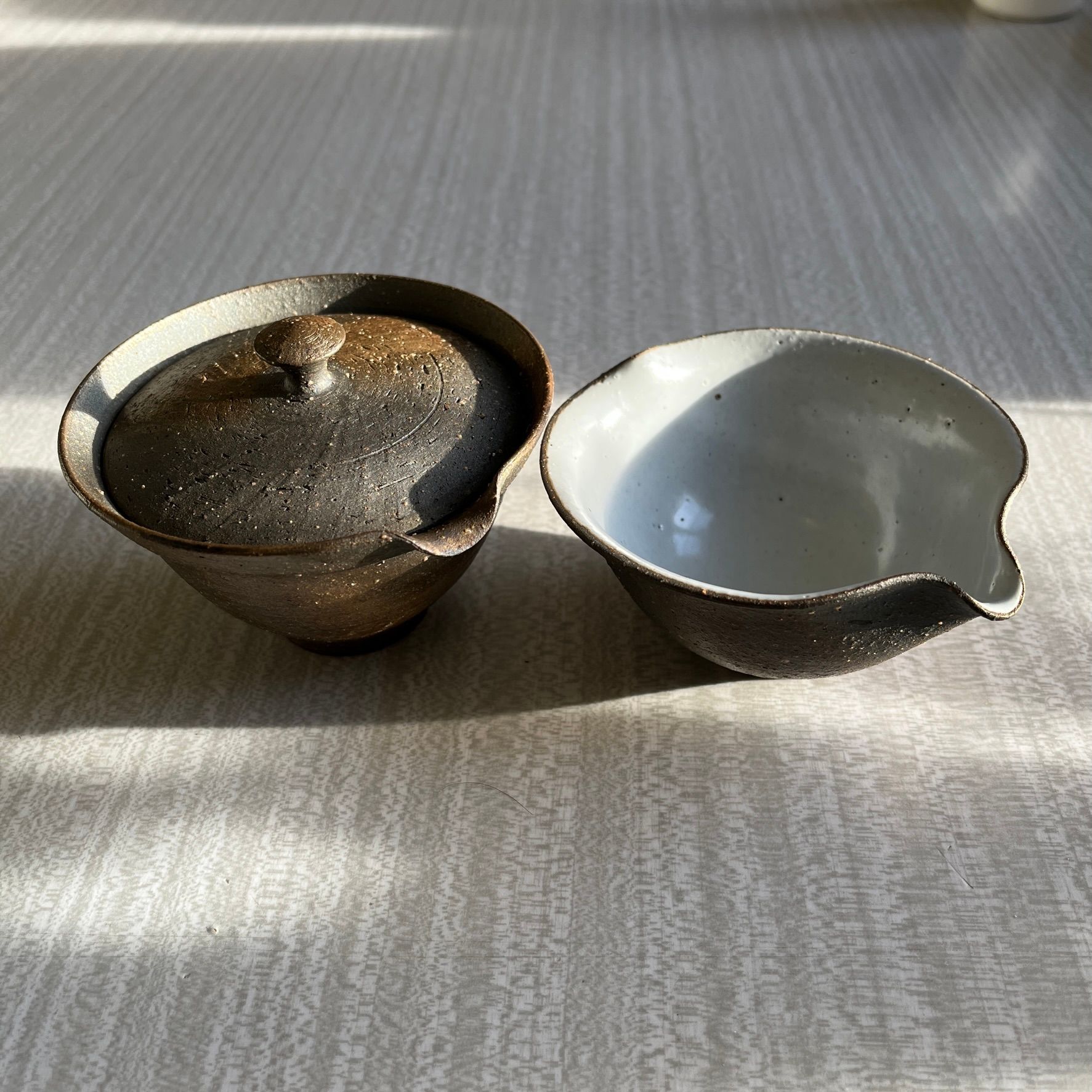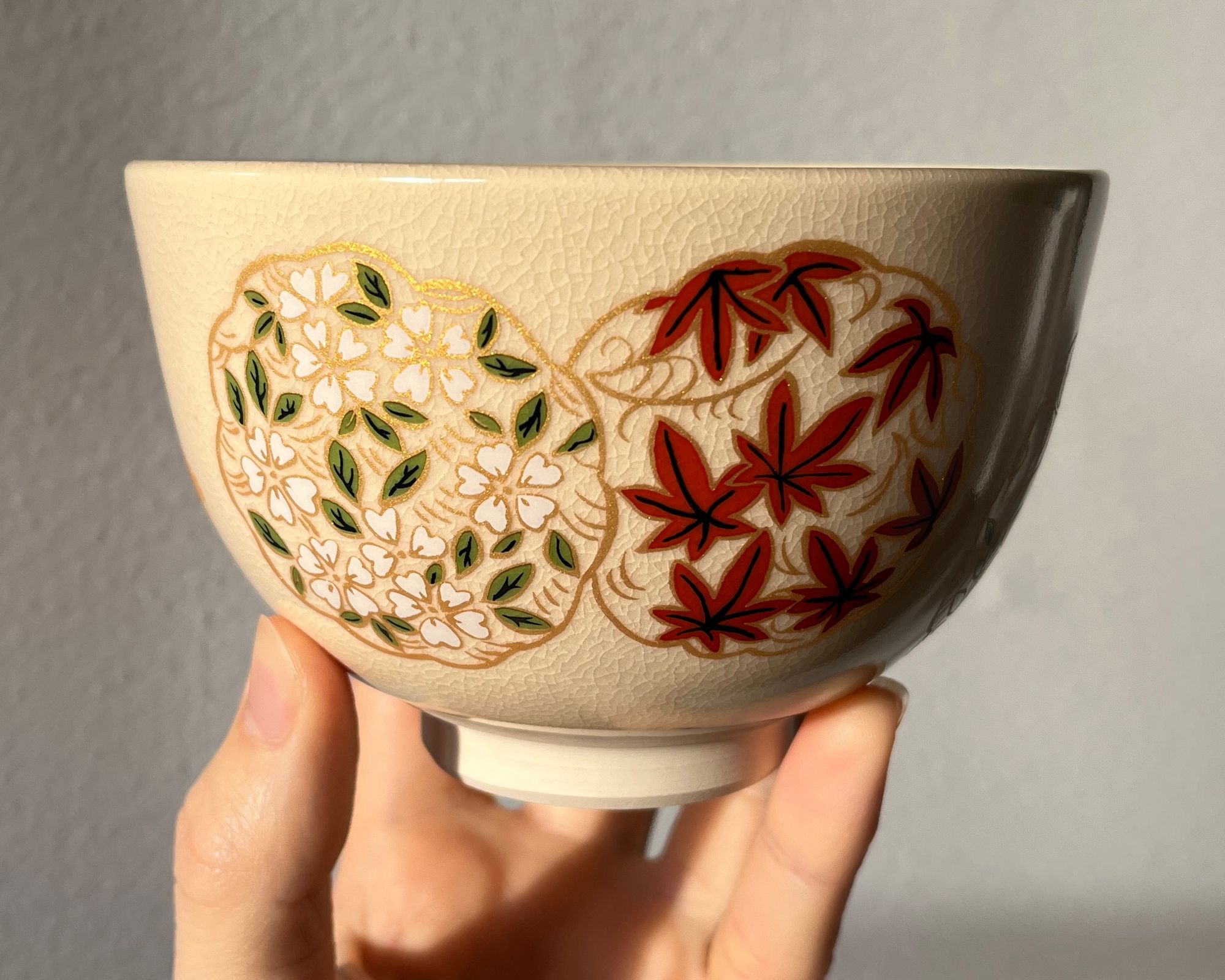Taking the GJTA Intermediate Course
In December 2022, I took part in the Global Japanese Tea Association Intermediate course. The course took place online for 2 hours once a week for a month, in the same format as the foundation course.

The Global Japanese Tea Association is a non-profit organisation established in Japan in January 2019. It focuses on creating a community around education and information about Japanese tea. Connecting producers, other organisations and consumers around events, Q&A sessions, courses and more.
In December 2022, I took part in the Global Japanese Tea Association Intermediate course. The course took place online for 2 hours once a week for a month, in the same format as the foundation course.
During the four days of the course, we when trough the following main topics:
- Tea industry, how it works and its organisation
- Japanese tea regions
- Tea production variations
- Lesser know teas
- Professional tea evaluation
- Japanese tea culture concepts
The course, as with the foundation course, included all the teas used and provided some extra tools used during this course.
The extra brewing tools included gyokuro cups and evaluation cups with mesh strainers for the wet leaves. My favourite was a set of shiboridashi and yuzamashi from Shigaraki, a renowned stoneware producing region. I have been using it almost daily since I got it.

Industry Overview
This first section was an introduction to the tea industry's general structure. From the farm level to the retail, passing through numerous stages and hands, it was surprising to see such specialization in some parts.
We went through some other ways some smaller farmers and cooperatives are starting to explore and reshape the established procedures and their challenges. Many farmers have their own shops and can sell domestically with relative ease.
The most common platforms where the teas are sold are shopping malls and supermarkets in national and local chains. A great demand for industrial use for bottled tea, confectionery items and similar. There is an increase in online sales in recent years, but many still struggle to market their teas on those platforms. Surprisingly or not, the sales in specialized tea shops make a small amount on the whole spectrum, declining rapidly.
On top of that, even though the exported volumes go up significantly yearly, it is still far from being a volume percentage. On exports, we also have to add the complex requirements that markets like Europe have for their imported good. Something many small farmers struggle with as requirements or certifications are not the same or equivalent between the United States and Europe, to mention two.
In my experience, many opt to guide their clients to Japanese shops where their products are available to not deal with international shipping directly. Or they provide it via forwarding services, making it inconvenient and more expensive. Other farms are pushing those online sales channels, and providing good service, sometimes in English, so it is not impossible to buy direct from farmers, but it might take more time invested.
It is my own opinion that the current system is going to be forced to change to a more streamlined one. Maybe we will see a merging of companies, offering many different services instead of handing it to the next company in line. With growing interest in single-origin, single-cultivar teas abroad, we could see a more direct trade with the farm being more common than now. Although for now is much more of a niche part of the whole industry.
Tea regions and regional variations
In the following section, we went through the most important producing areas one by one. The outline of each region was reinforced with historical developments and other particular characteristics.
I enjoyed learning more about areas like Mie, which I had the pleasure of visiting when I lived in Japan. The historical background was interesting, and not only the tea one but also their regional pottery style, Banko-yaki.
While learning about the different regions, we learnt about several regional style variations. Some are due to consumer preferences, and some are due to environmental conditions. Historical development plays an important role, both for the tradition rooted in the region and the lack of it as well.
Lesser known styles
This section showcased styles like Kamairicha, a pan-fired version inherited from the traditional Chinese and Korean tea production rooted in the Kyushu island. Personally, these styles of tea are precious to me, and I enjoy learning about them. This section was great for not only understanding its process but their origins.
Other completely different styles, like Japanese oolong and black tea, are not significantly common in Japan. Although they were in the past, it seems these could play an important role in the future of the Japanese tea industry. In particular, black tea has been a resurgence in recent years and gained more "personality".
Tea evaluation
Armed with our new evaluation bowls, we tasted several different styles and tea variations. It was incredibly instructive to learn about them and compare them next to each other with the instructor. It was interesting to taste 3 different varieties together. Including Zairai, the natural state of tea plants, from seed and not subject to breeding.
It was delicious. The Zairai variety was very delicate and floral, while you could see the other two having more pronounced characteristics. Not in a bad sense, but sharing notes more clearly with other teas. I have been interested in learning more about Japanese tea varieties for a while now. It's difficult to find information in English about them, 2 great resources are:
- My Japanese green tea. Ricardo has compiled a great list of varietals and separated them according to their registration authority or the lack of official registration.
- Japanese Tea Sommelier. Florent from Thés du Japon has a great (and long) post where he denotes varieties and their tasting notes.
Both are great resources.
Tea culture
The last day was more relaxed, after the two previous lessons being so focused on tasting and dense in information. In the last class, we went through some historical developments from the introductory course. Then took a look into the developments around the tea ceremony and the schools that carry its traditions nowadays.
Some interesting bits were the separation between the merchant and warrior styles. And how the Sansenke schools, the three that inherited the teachings from Sen no Rikyu, came to be. And are still present in our current time. Preserving and following the traditions in the same way as in ancient times.
Something that I enjoyed is that even though the topic was focused on the mentality and concepts that constitute tea ceremonies at their foundational level. Both for the Tea ceremony and the Sencha tea ceremony.
At the end of the session and before the final test, we made one last brewing. Perhaps the most impactful one in a very long time for me. Our instructor guided us in preparing a Koicha bowl, a thicker version of matcha than Usucha. It was an incredible drink, thick, smooth, sweet, with a gentleness I did not expect. I am not a big matcha drinker, but I am interested in it.
This bowl made me realise what a truly high-grade tea can become. Only now do I begin to understand why Koicha is usually reserved for the highest grades. And why some state, “…if a matcha powder cannot be prepared as Koicha cannot be called Matcha.” This experience taught me how important it is to keep an open mind about anything. I did know that plain, traditionally prepared matcha was not a pleasant experience in most cases for me. And that probably was due to my lack of knowledge and due to my technique and leaf/powder material.
Now I think I have understood something that I can develop further. And motivated me to submerge myself into the tea ceremony, something I had never been too interested in.

Overall experience
In the introductory course, I had a positive experience. That I recommend it to anyone with an interest in Japanese tea. Now I have no option but to recommend it again. It will teach you insights from the industry, what points there have been developments in and which are currently the difficulties for the farmers. You will be guided through a tasting of Japanese tea varieties. And other less frequent styles of teas. Learn about growing regions, their specialities, and their historical developments. And lastly, learn about the main concepts tea ceremonies are built on.
I have nothing else but good words for the team at the Global Japanese Tea Association for their excellent work in this course. And on all their other events and work in the community. Congratulations!
